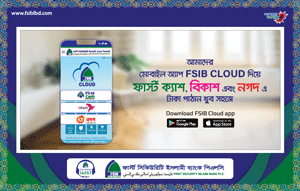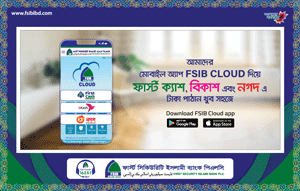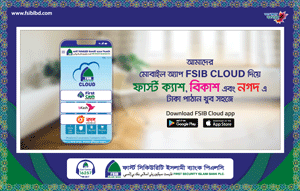Bangladesh’s manpower export sector, a cornerstone of its economy, has shown notable expansion in recent years.
With over 1.3 million workers deployed in 2023, the country is not only filling workforce gaps abroad but also benefiting domestically from the remittances these expatriates send home.
Yet, as this sector grows, challenges regarding the quality of migration—especially in terms of skill levels and market diversification—remain.
Given the current status of the global economy, Bangladesh needs to explore alternative markets and make strategic recommendations for focusing on quality migration rather than simply increasing numbers.
Current state of manpower export
In 2023, Bangladesh reached a peak in manpower exports, primarily driven by opportunities in Saudi Arabia, Malaysia, and other Middle Eastern countries.
According to data from the Bureau of Manpower, Employment, and Training (BMET), Saudi Arabia hired nearly half a million Bangladeshi workers, and Malaysia reopened its doors, absorbing a significant number of Bangladeshis after a long hiatus.
In addition to traditional markets, there was a 22% increase in skilled workers, with non-traditional destinations like Italy, the UK, and South Korea becoming notable employers.
However, 50% of all manpower export remains unskilled labour, pointing to a need for further skill development to improve job quality and workers' earning potential abroad.
Economic impact of remittances
Bangladesh’s economic dependence on remittances is substantial. Remittances account for over 6% of the country’s GDP, providing crucial foreign currency and supporting millions of households.
In 2023, Bangladesh received $21.91 billion in remittances, a slight increase from the previous year.
Remittance flows are linked closely to employment conditions, wages, and skill levels of Bangladeshi workers abroad.
Skilled migrants tend to send higher remittances due to better salaries, whereas low-skilled and unskilled labour generates smaller financial returns.
Increasing skilled labour migration could, therefore, improve Bangladesh’s remittance inflow, aiding economic stability and reducing the trade deficit.
Exploring alternative markets
With traditional Middle Eastern markets often saturated, there is a push to explore alternative destinations that demand skilled labour. Italy, South Korea, and the UK have emerged as new markets.
Italy has shown interest in agricultural and hospitality roles, while South Korea offers opportunities in manufacturing and services under its Employment Permit System (EPS).
The UK is increasingly hiring Bangladeshi caregivers and healthcare workers, a sector expected to expand as the country faces healthcare staff shortages.
To tap into these markets, Bangladesh must improve bilateral relations and tailor its workforce skills to these countries' needs.
For instance, the healthcare and hospitality industries in Europe demand language proficiency and certifications in health and caregiving, areas where Bangladesh could enhance its vocational training programs.
Targeting such sectors in high-income economies can also ensure better wages and living conditions for migrants, aligning with the goal of quality migration.
Quality vs. quantity: focusing on skill development
The current manpower export strategy in Bangladesh heavily emphasises quantity over quality.
A high proportion of the migrant workforce remains unskilled or minimally skilled, working in low-wage jobs with limited upward mobility.
To shift focus to quality migration, Bangladesh must prioritise skill development, matching the competencies of its workforce with global standards.
Key areas for improvement include technical skills, language proficiency, certification and compliance.
Many developed nations seek skilled technicians in construction, manufacturing, and information technology.
Programmes under the Technical and Vocational Education and Training (TVET) authority in Bangladesh could be expanded to include advanced courses in these fields.
Language skills are crucial for countries like Italy and South Korea, which prefer workers who can communicate effectively.
Initiatives to teach destination-specific languages could significantly improve job prospects and integration for Bangladeshi migrants.
Many countries prefer workers with verifiable skills and recognised certifications.
Bangladesh can collaborate with international certifying bodies to offer certifications that are recognized abroad, giving migrants a competitive edge and ensuring they meet international standards.
Enhancing labour agreements and protections
Protecting Bangladeshi workers abroad remains a significant challenge.
Many migrants face issues such as non-payment of wages, inadequate living conditions, and lack of health insurance.
To address these concerns, Bangladesh can negotiate stronger labour agreements with host countries to enforce better standards and ensure basic protections.
Establishing more robust bilateral labour agreements that mandate fair wages, health insurance, and access to legal assistance for migrants can be instrumental.
These agreements would set minimum conditions for Bangladeshi workers, reducing the risks associated with overseas employment.
Bangladesh has a welfare fund for migrant workers that could be expanded to include more comprehensive insurance coverage, support for returning migrants, and reintegration programs.
Such support can mitigate the financial and social costs faced by migrants and their families.
Improving remittance channels and financial literacy
While remittances contribute significantly to the economy, not all are sent through formal channels, resulting in reduced transparency and lower official inflows.
To maximise remittance benefits incentives for formal channels and financial literacy programmes are essential.
Offering lower fees or tax incentives for using formal remittance channels could encourage migrants to send money through legal routes.
Digital payment options and mobile banking could further simplify and formalise the remittance process.
Educating migrants and their families on financial planning, investments, and savings would enable them to utilize remittances more effectively, fostering long-term economic security.
Challenges and limitations in expanding alternative markets
Expanding into new markets is not without challenges. Some countries have strict visa policies or quotas that limit the number of workers from specific countries.
Additionally, skills training programs take time to yield results, as does the process of establishing trust and partnerships with foreign employers.
Bangladesh may face competition from other labour-supplying nations, requiring it to offer unique advantages, such as a highly skilled workforce or cost-competitive labour rates.
Furthermore, the lack of adequate regulatory frameworks for ensuring quality migration and curbing fraudulent recruitment practices remains a barrier.
Many migrants, especially unskilled ones, are vulnerable to exploitation by recruiters.
To counter this, Bangladesh could adopt digital recruitment platforms and strictly monitor private recruitment agencies to prevent malpractices, ensuring that migrants have access to reliable information and fair recruitment processes.
Requirement for the futuristic roadmap
Future of Bangladesh’s manpower export lies in quality migration, characterised by skilled labour, strong worker protections, and diversified market destinations.
This shift would not only enhance remittance flows but also improve the livelihoods and dignity of Bangladeshi workers abroad.
To achieve this investment in specialised skills, strengthen bilateral relations with host countries, focusing on worker welfare and rights, formalising and increasing remittance flows are essential.
Bangladesh should expand training programs in sectors like healthcare, IT, and construction to match the needs of high-income countries would open up higher-paying job opportunities.
labour agreements with emerging markets in Europe, East Asia, and the Americas, while maintaining strong ties with traditional markets, can ensure stable demand for Bangladeshi workers can another instrumental.
Ensuring legal protections for Bangladeshi migrants can reduce exploitation, while welfare funds can offer support and security for workers and their families.
By promoting formal remittance channels and improving financial literacy, Bangladesh can optimise the economic benefits of migration.
Bangladesh’s shift from a volume-based to a quality-based migration strategy could redefine its manpower export landscape, creating sustainable economic benefits and a reputable labour force recognised internationally.














